Virgil Abloh’s Mercedes-Maybach EV encapsulates the late designer’s radical touch
Mercedes-Benz unveiled a wild electric show car: Project Maybach. And apart from its striking appearance, the vehicle also has sentimental value. The car was co-designed by the late fashion designer Virgil Abloh. To honor his memory, it was put on display at the Rubell Museum in Miami between December 1 and 2.
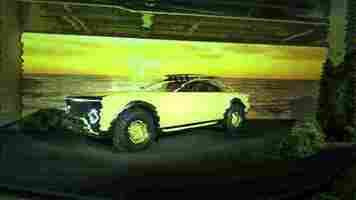
Abloh worked t ogether with the automaker’s c hief design officer Gorden Wagener to develop a new design language for Mercedes-Maybach’s luxury identity.
Every element of Project Maybach is created from scratch, the company says, and this has resulted into a car design “unlike anything that has been developed by Mercedes-Benz.”
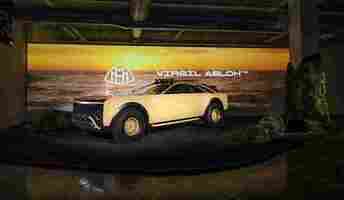

Inspired by the idea “luxury meets the great outdoors,” the concept car is full of stark contracts and unexpected features, which somehow find a way to complement each other.
First up, it’s the surprising merge of a two-seater coupe with an off-roader.
As such, it comes with thick all-terrain tires and an exterior roll cage extending up and over the cabin. At the front and rear, there are also additional metal skid plates, as well as body cladding with visible rivets over the wheel wells.
At the same time, the concept car has an unusual size: it’s almost six meters long . That could have wrong, but I think it adds to its coupe nature; the elongated form somehow smooths the ruggedness of the off-road characteristics.
Under a full-width light bar, the Project Maybach’s front end includes circular LED headlamps and chrome vertical grille trim elements. A bull bar affixed to the bumper has four auxiliary lights, while the roof rack has four extra.
Round taillights mimic the headlights, and the two-tone appearance conceals solar cells beneath the transparent hood, added to increase the imagined (and unknown) range of the car. Maybe that’s overkill, but an interesting choice nonetheless.
Interestingly, the interior is luxurious but in a very minimalistic way. And I do like the “less is more” vibe it exudes.
All in all, Project Maybach proudly expresses the radical and future-driven touch of Virgil Abloh. I don’t think it will ever reach production, but it’s still a telling testament of the designer’s legacy that stretches far beyond fashion.
Instead of ‘rush hour,’ we now have the ‘rush afternoon’ — thanks, COVID
This article was originally published by Sarah Wray on Cities Today , the leading news platform on urban mobility and innovation, reaching an international audience of city leaders. For the latest updates follow Cities Today on Twitter , Facebook , LinkedIn , Instagram , and YouTube , or sign up for Cities Today News.
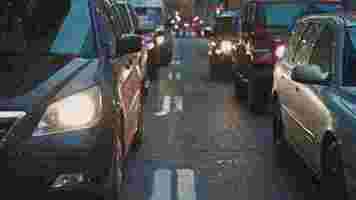
New analysis of anonymized location data casts doubt on US cities’ hopes of avoiding a car-led recovery.
The report from transport analytics company StreetLight Data shows that while the number of vehicle miles travelled (VMT) in February 2021 was still 12% below the previous year, by March 2021 it rose to nearly 2% above the February 2020 pre-pandemic baseline.
The research finds that 37 states saw an increase in March 2021 VMT compared to February 2020, while only 12 states were still below the February average daily VMT.
This came after an unprecedented pandemic-induced 40.2% VMT drop in April 2020, compared to 2019, followed by volatility throughout the year.
“Although states varied their reopening policies and timelines, the one-year mark denoted a clear ‘return to normal’ for the US overall,” the report states.
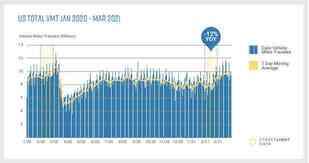

Rush afternoon
Not all patterns are returning to the pre-pandemic status quo yet, but there are signs that they could.
StreetLight Data’s August 2020 analysis of hourly travel in Chicago, Los Angeles, San Francisco, Washington, and New York revealed the disappearance of the morning rush hour. Instead of the typical sharp morning peak travel, followed by a drop and then an afternoon peak, data showed weekday traffic building gradually toward a more sustained afternoon high.
This “rush afternoon” pattern has broadly held in the latest analysis. However, there are exceptions in the Florida cities of Tampa and Orlando, which were already returning to a more traditional daily traffic pattern by February this year.
“This is a warning sign that other cities may soon follow suit, as remote work gradually gives way to office commutes,” the report states.
“Many transportation planners hoped to preserve the pandemic’s low VMT as the economy recovers. But these Florida cities indicate that this isn’t likely without concerted efforts by local policy makers and businesses.”
Traffic-taming tactics
Martin Morzynski, Vice President of Marketing at StreetLight Data, told Cities Today that location-based data can help cities design and measure traffic management strategies better than traditional methods like fixed traffic sensors or bike counters.
The company’s website says that every month the platform ingests, indexes and processes 40 billion anonymized location records from smartphones and navigation devices in connected cars and trucks.
“Our data gives cities a comprehensive view of how vehicles and people move at a geographic, and temporal, granularity that allows them to overlay geographic interventions at a level that is actionable,” Morzynski said. “Mere ‘average’ city-wide data or spotty local-road data means they’re guessing.”
He added: “Lack of near-real-time origin-destination data – a critical metric for planners – means they can’t really measure, for example, whether a large employer’s staggered work schedule scheme is really having an impact on traffic. StreetLight helps them not only do that, but measure impact on local versus regional traffic.”
Do EVs excite your electrons? Do ebikes get your wheels spinning? Do self-driving cars get you all charged up?
Then you need the weekly SHIFT newsletter in your life. Click here to sign up .
Adaptive traffic lights trial aims to cut fuel consumption by 20%
This article was originally published by Christopher Carey on Cities Today , the leading news platform on urban mobility and innovation, reaching an international audience of city leaders. For the latest updates follow Cities Today on Twitter , Facebook , LinkedIn , Instagram , and YouTube , or sign up for Cities Today News.
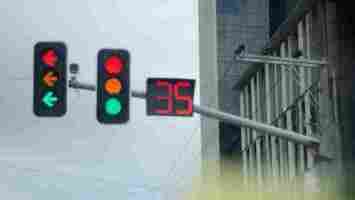
The University of Tennessee-Chattanooga’s Center for Urban Informatics and Progress has been awarded a US$1.89 million grant from the US Department of Energy for a research project to create a new model for traffic intersections that reduces energy consumption.
Along with partners including the University of Pittsburgh, Georgia Institute of Technology, Oak Ridge National Laboratory and the City of Chattanooga, the three-year project aims to develop a dynamic adaptive traffic control system (ATCS) that reduces corridor-level fuel consumption by 20 percent while maintaining a safe and efficient transportation environment.
According to the US Department of Energy’s 2020 Transportation Energy Data Book , the transportation sector is responsible for more than 69 percent of petroleum consumption, while the Environmental Protection Agency says emissions from transportation account for about 28 percent of total US greenhouse gas emissions.
Mina Sartipi, Director at the University of Tennessee-Chattanooga’s Center for Urban Informatics and Progress, told Cities Today : “There’s a lot of optimization in traffic control system work, but none is focused on energy consumption.
“This project is all about connectivity. How we can use connected infrastructure and connected vehicles to improve adaptive traffic control systems. It is a very collaborative and integrated project – we’re all going to be working very closely on this.”
Smart corridor
The first year of the project will focus on the development of algorithms, followed by a simulation at the Oak Ridge National Laboratory. The final year will see everything laid out in a real-world environment in Chattanooga, using the existing two-kilometer MLK Smart Corridor .
The corridor – which was developed two years ago – has served as a test bed for research in smart city developments and connected vehicles. It also serves as programmable and flexible wireless infrastructure for different applications.
A network of sensors in combination with data analytics provide a means of monitoring and controlling city resources and infrastructure in real time. Additionally, the test bed supports a wide variety of data sources, computation capabilities and communications technologies for users.
“We chose an area that was very busy and incorporated different modes, like walking, biking and public transport. One of our busiest bus routes passes through it and there are electric car charging stations too. It’s kind of a sample of everything that’s happening in the city,” Sartipi said.
A 2012 National Traffic Signal Report Card found that inefficient traffic signals contribute to 295 million vehicle hours of traffic delay, accounting for 5-10 percent of all traffic-related delays.
Chattanooga Smart City Director, Kevin Comstock, said “Chattanooga is a city focused on embracing technology and innovation to create a safer and more efficient environment.
“Being supported and affirmed by the Department of Energy is an enormous vote of confidence in the direction we’re heading.”
SHIFT is brought to you by Polestar. It’s time to accelerate the shift to sustainable mobility. That is why Polestar combines electric driving with cutting-edge design and thrilling performance. Find out how .